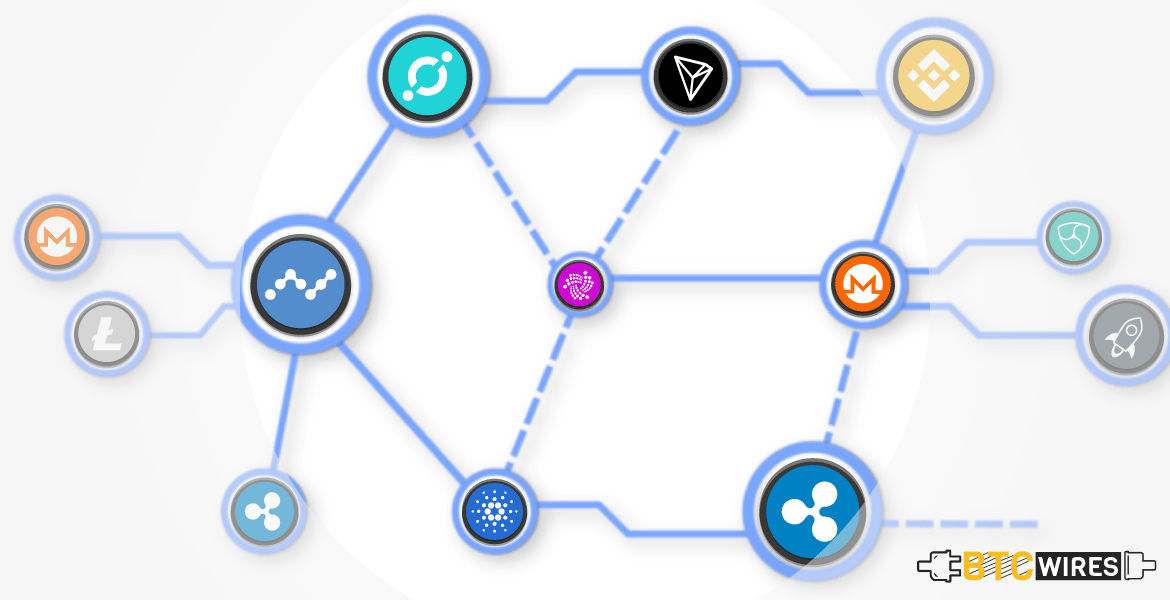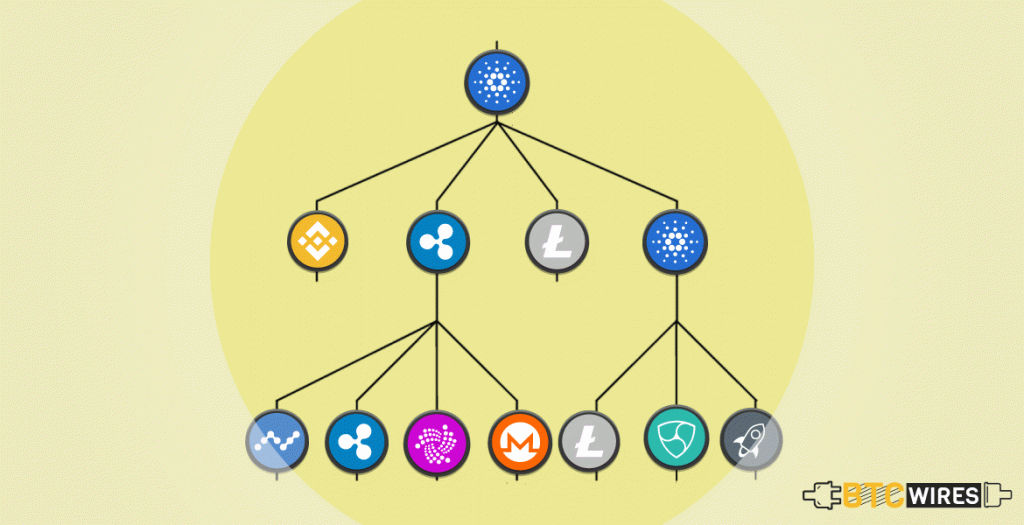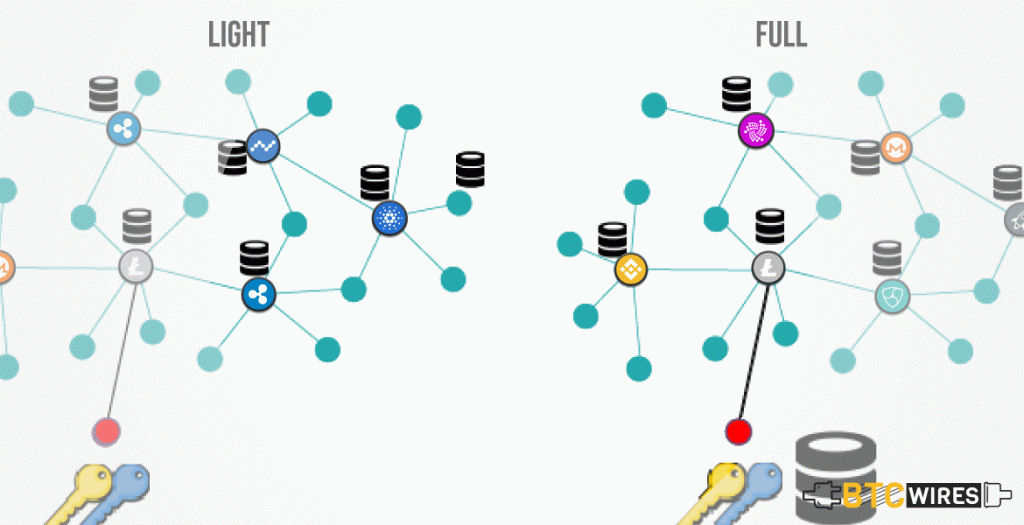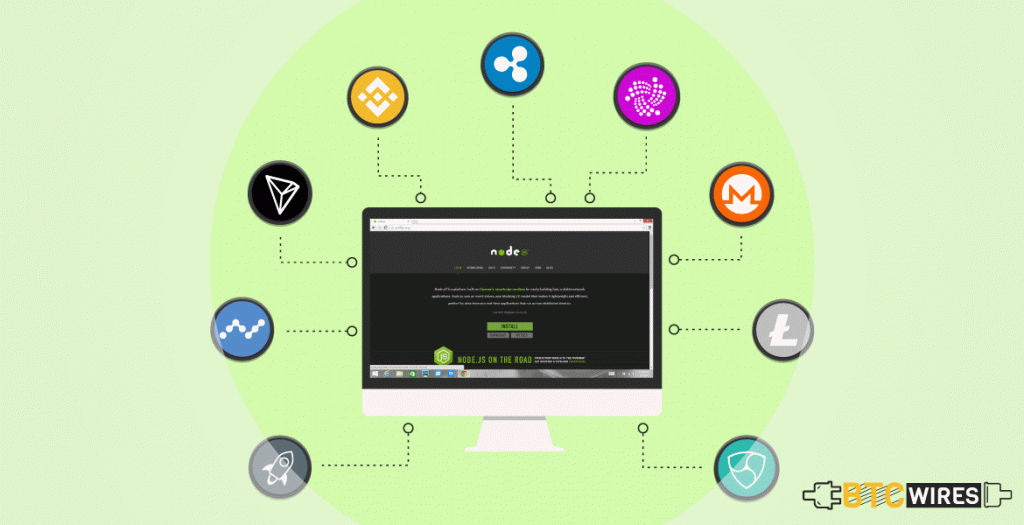Nodes are data points in a network, for example, your

Nodes are data points in a network, for example, your mobile phone acts as a node for your service provider.
However, Nodes serves a completely different purpose when we take Blockchain in consideration. The basic definition remains the same, the differences arise over the functionality.
Nodes are responsible for maintaining the integrity of a blockchain as it acts as the distributed ledger which can be downloaded by anyone for personal use.
Nodes contain the complete database of the Network in a blockchain.
You May Also Read: Tokens
What is the purpose of the Node in a Blockchain?

Blockchain technology as we all know works in a decentralized fashion, where there is no central authority in control. So, how does authentication and transaction verification is done on the network?
Blockchain data verification is done through a process called mining, and the result of the verification is updated on the node.
Let us try to dumb down the role of nodes on a blockchain network for a better understanding.
Suppose you own a small gift shop which deals in Christmas presents and you have three branches in the city.
For every good sold, you note down the transaction on a register at each branch and the accountant has the access to all three to make a final draft. The transactions on the register are verified by the amount of money collected against the remaining goods in the inventory.
Here, the accountant is the key and central authority who makes the final decision. What if he gets greedy and tries to manipulate the ledger to his own benefit? The answer is blockchain and decentralization.
Now imagine the same situation without anyone having to make registers and bring in the accountant. In this system, every product comes in with a barcode with all the details. Once a customer buys something, the product gets scanned and registered automatically.
Everyone has access to the register to see how many products are sold and how many are left. This information or database publicly available to everyone is called node, and the barcode on products are transaction verification.
Nodes are responsible for maintaining the decentralization of a network, all the details and data are stored on the nodes which can be used to verify the transactions by anyone with enough capability and computational power.
People should not confuse between a node and Mining. Mining is a process whereas Node is a resource. People can make monetary benefits out of mining, but nobody pays you anything for running a node.
In conclusion, we can say, Nodes are xerox copies of the complete database of a network which can be used to verify or check a transaction.
You May Also Read: Public Key
Full Nodes Vs Light Nodes

As the Blockchain scalability comes into the picture, running a complete node becomes a headache as the size of a single block exceeds beyond the processing compatibility of normal household computers. And there is no incentive program for running a full node, it is done out of sere dedication by a crypto enthusiast to maintain the decentralized aspect of the blockchain.
A full node contains the database of every single transaction on the network. For example, a complete Bitcoin node would contain every block information on the network since the first transaction in 2009.
Light nodes are considered to be the answer to growing scalability problems in a blockchain. A light node contains only relative data for a certain period of time. The database could be monthly or quarterly based.
You May Also Read: Transaction Confirmation
How to Setup and Run a Full Node?

Running a full node of any cryptocurrency or blockchain network is quite simple than many thinks. It is as simple as downloading and setting up a new video game on your computer. We will take Bitcoin as an example here.
In order to set up and download a complete Bitcoin Node, your computer must fulfill a certain prerequisite, we will discuss all the requirements below.
The Hardware Requirements
- A recent version of macOS, Linux, or Windows operating system
- 145 GB of free disk space
- 2GB of RAM
- A high-speed internet connection (at least 50kB/s)
- Unlimited or very high upload/download limits (a node can upload ~200GB and download ~20GB per month)
The Software Requirements
After you have successfully decided and fulfilled the hardware requirements for setting up the node, the next choice you need to make is the software. Let us see how you can set up and run core GUI.
- Download the latest Bitcoin Core GUI from the bitcoin.org download page for your operating system of choice.
- Run the software and you will be prompted to choose a directory for storing the blockchain data. Unless you have a specific preference here, go ahead and leave the “Use the default data directory” option checked and hit OK.
- At this point on Windows computers, you may have a firewall prompt appear asking for permission to let Bitcoin communicate over the web. Check all boxes and allow these permissions.
- The software should begin downloading the blockchain. This will take anywhere from 12 hours to a couple of days depending on your internet speeds and bandwidth. Let it finish and you’re officially running a Bitcoin full node! See the Network Configuration section below to make sure your node has the access it needs to run properly.
Now that you have successfully installed and set up the Bitcoin node, you can become a part of the network and help to keep it decentralized.
Here Are A Few Other Articles For You To Read
